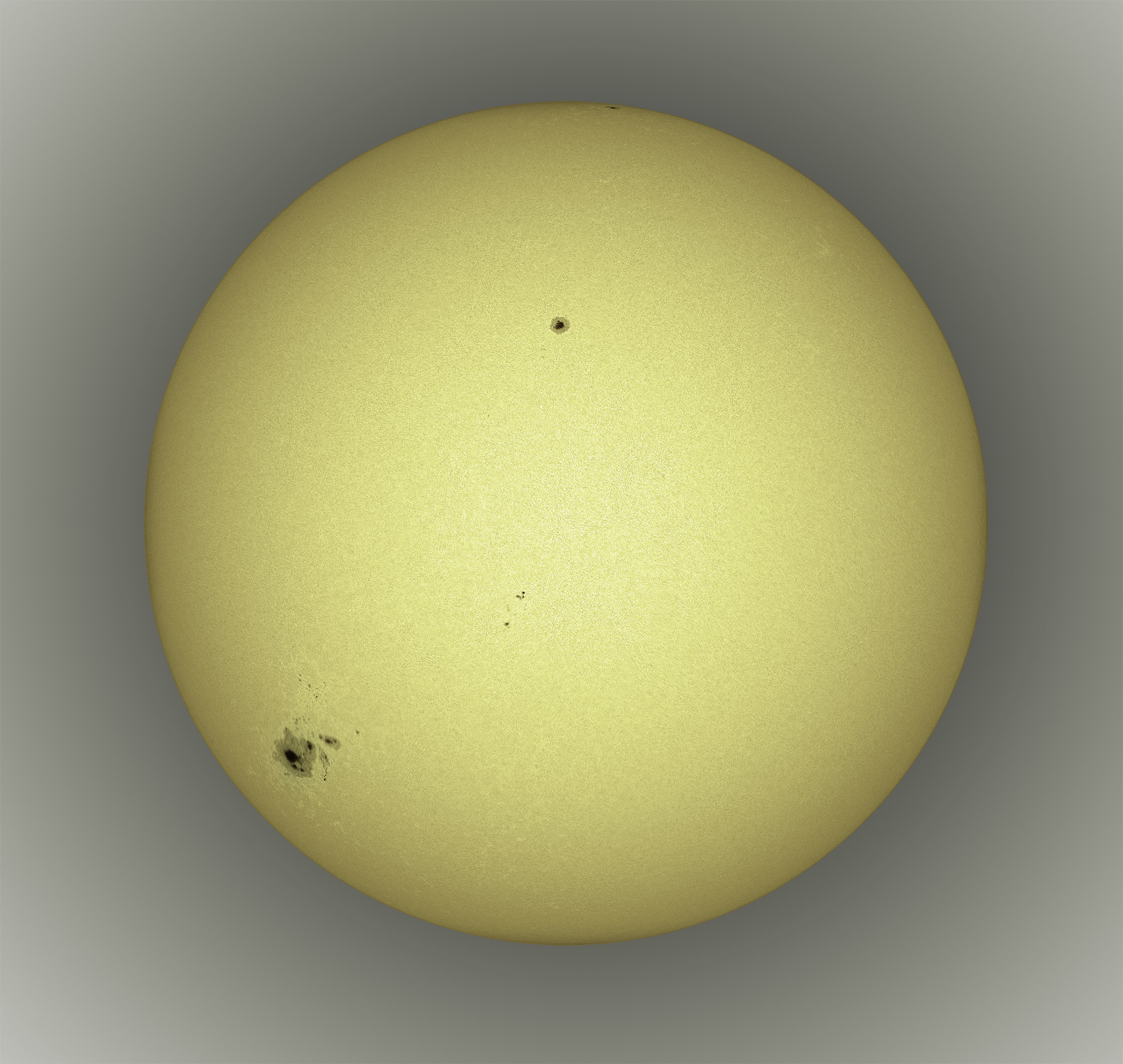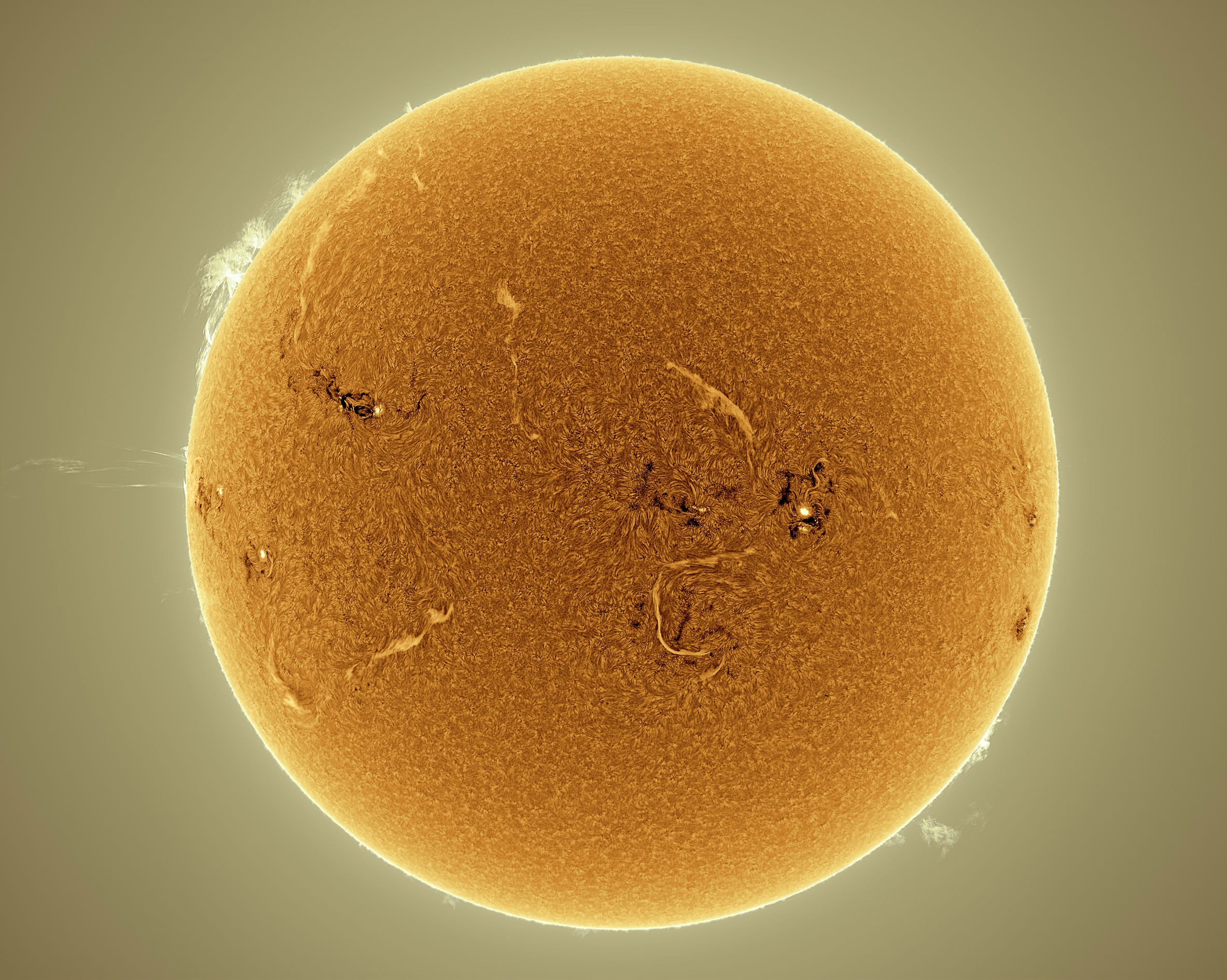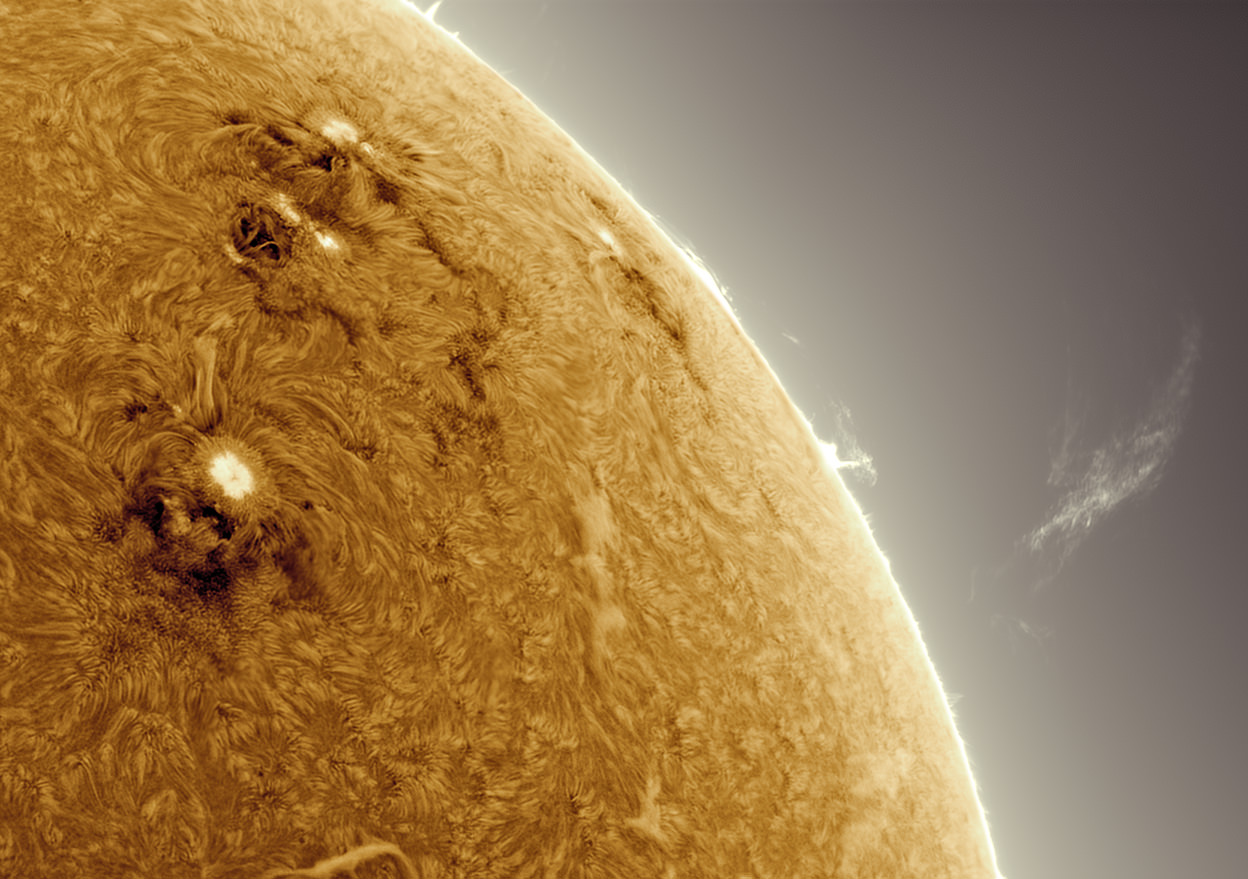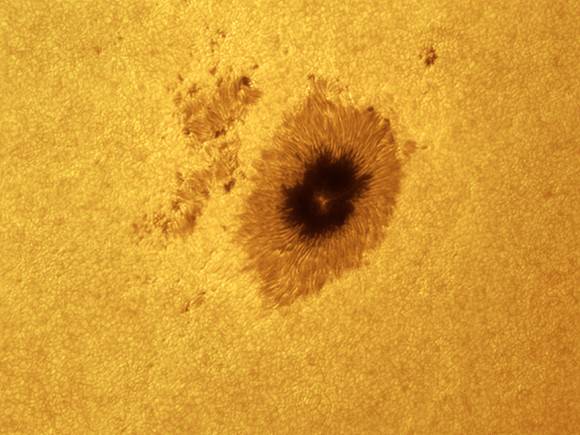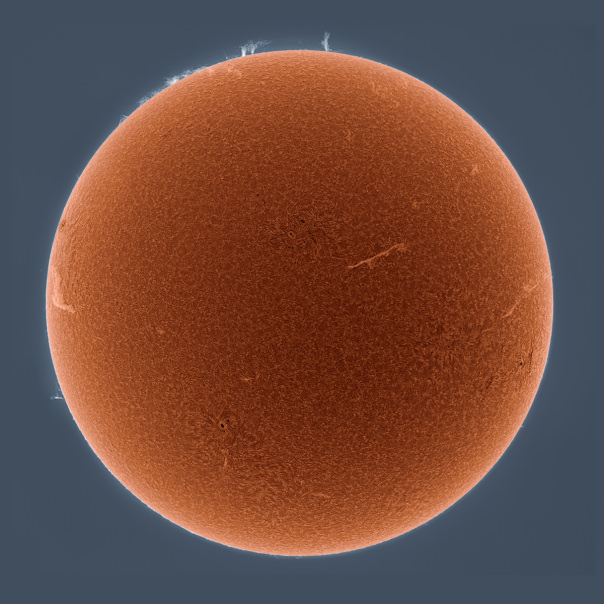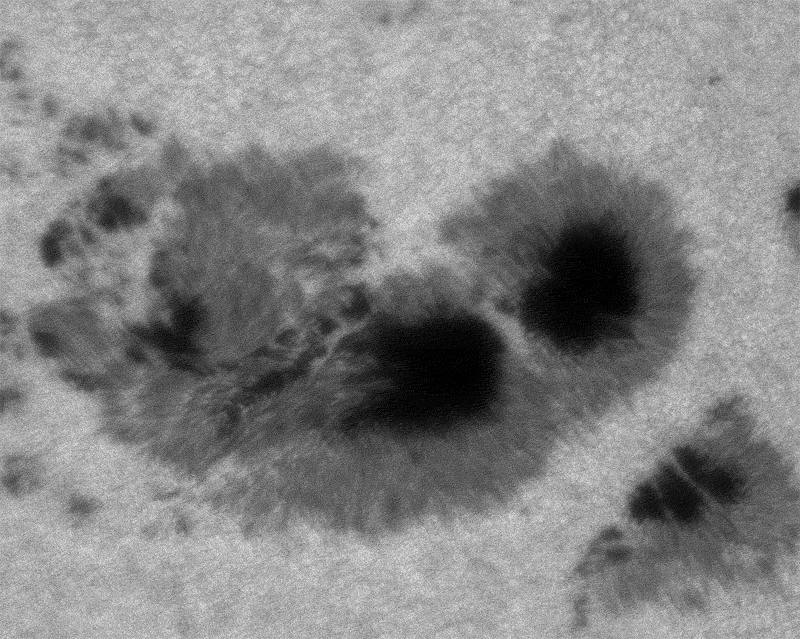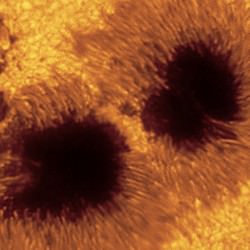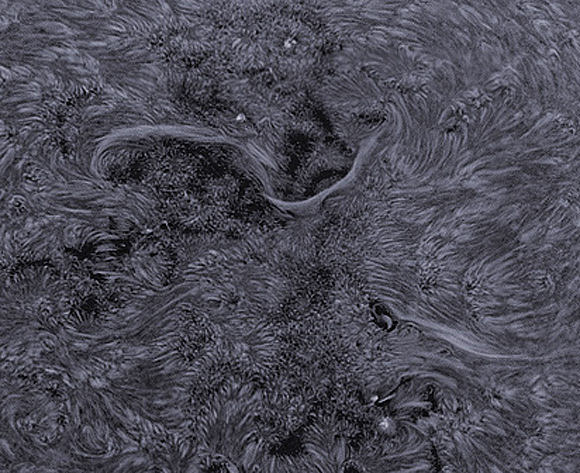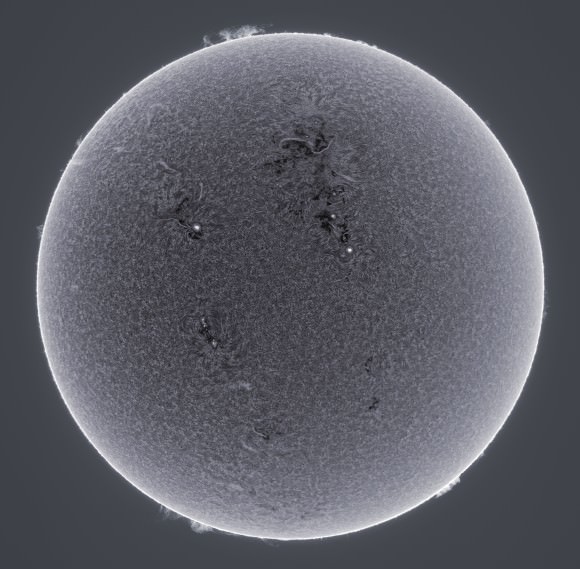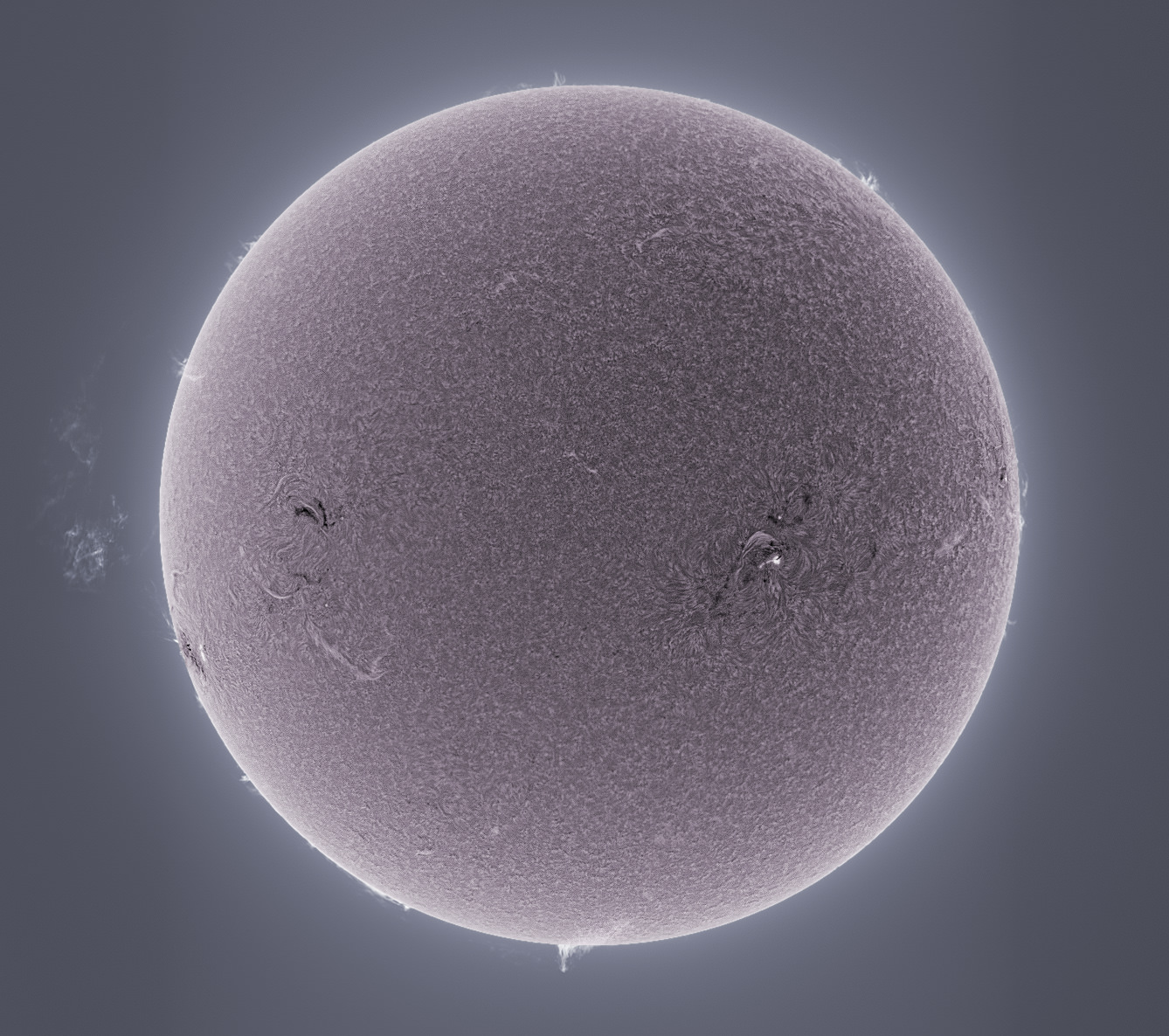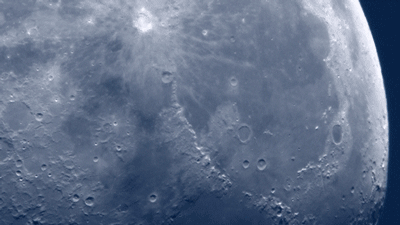It’s a-comin’: a “monster” sunspot is steadily rotating around the Sun’s southern hemisphere and will soon be in position to fire flares and CMEs in our direction — and this past weekend master solar photographer Alan Friedman captured it on camera!
The image above was taken in full-spectrum visible light on Sunday, Oct. 19 by Alan from his backyard in Buffalo, New York. Sunspots 2186 (at the top limb), 2187 (upper center), 2193 (the small middle cluster) and the enormous AR2192 are easily visible as dark blotches – “cooler” regions on the Sun’s surface where upwelling magnetic fields interrupt the convective processes that drive the Sun’s energy output.
This particular image was a single frame of video, unlike some of Alan’s other photographs. According to Alan the air turbulence was particularly bad that day, shooting between the clouds, so only this one frame was usable. Click the image for full-scale “wow” factor.
(And if you think AR2192 looks scary in that image, check it out in CaK bands here!)
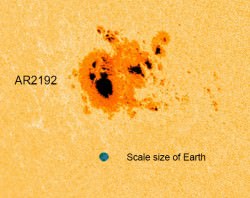
According to Spaceweather.com AR2192 has grown considerably over the past few days and has the potential to unleash M- and X-class flares in our direction now that it’s moving into Earth-facing position. It’s currently many times larger than Earth and will likely get even bigger… in fact, during this week’s partial solar eclipse AR2192 should be visible with the naked (but not unprotected!) eye for viewers across much of North America.
See more of Alan’s photography on his Averted Imagination site here (with prints available for purchase) and watch a TEDx presentation by Alan on how and why he does solar photography.
Image © Alan Friedman. Used with permission.

